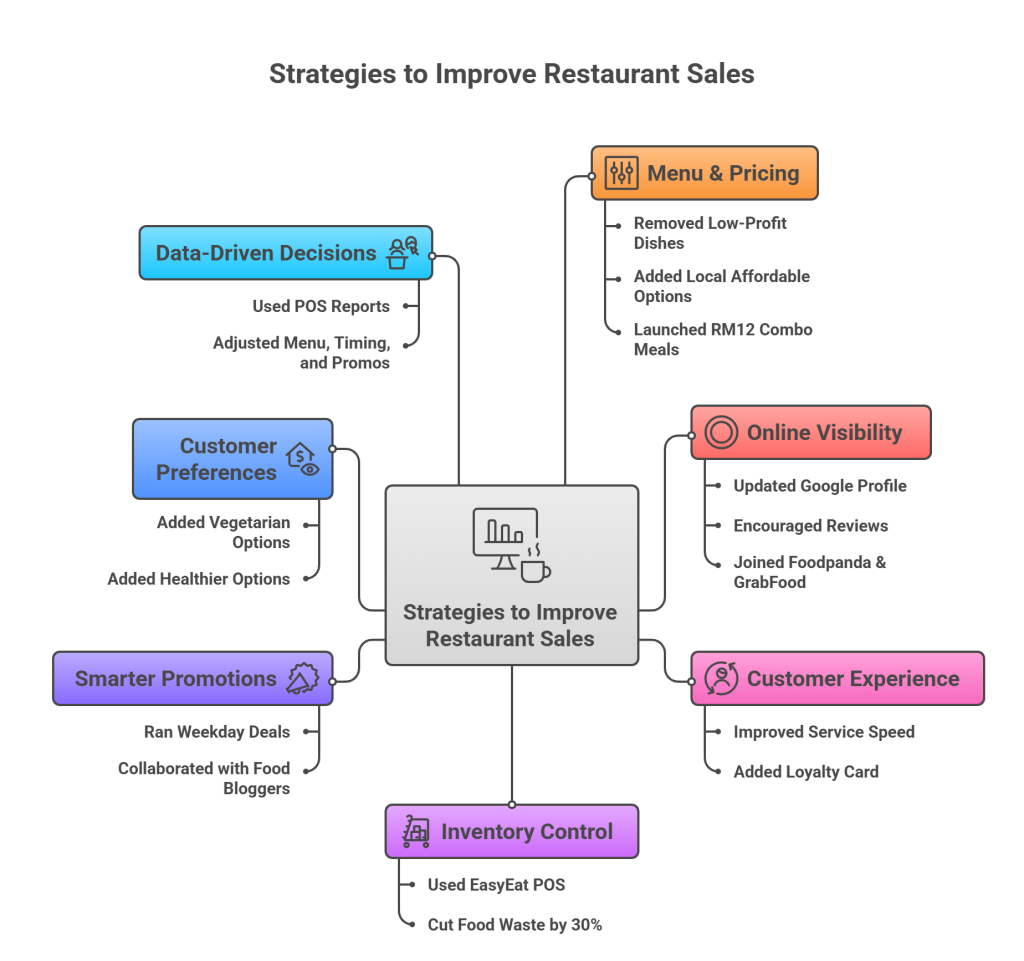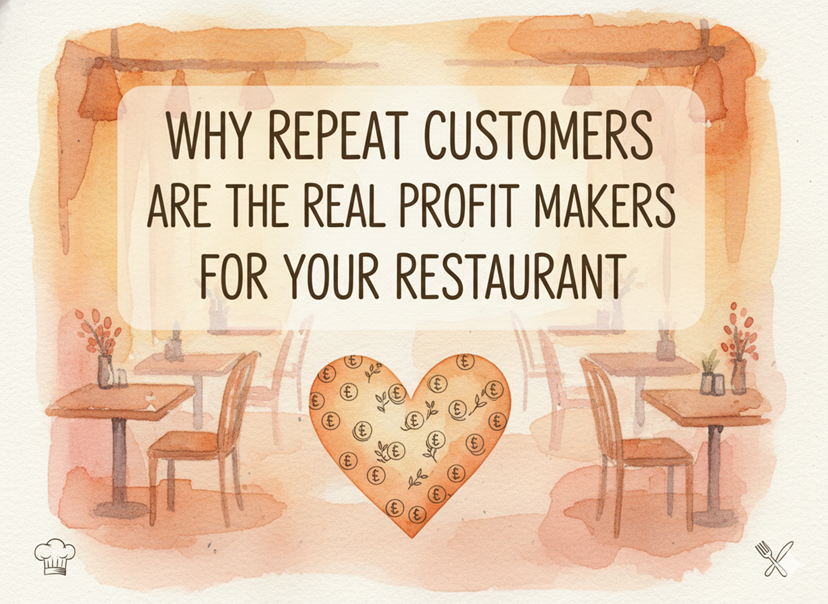When my restaurant started feeling quieter, I knew something was wrong. Regular customers were coming less often, and my daily sales kept slipping. I went from earning around RM2500 a day to RM1700 within a couple of months. That drop made me worry. I was facing what many others experience- a restaurant slowdown.
It’s easy to panic when this happens. However, once I understood what caused it, I realized there were ways to rectify the issue. Here’s how I handled it step by step.
Understanding What a Restaurant Slowdown Means
A restaurant slowdown happens when your usual sales drop steadily over time. It’s not a one-day thing as it builds up gradually. You may notice fewer dine-in customers, smaller bills, or reduced online orders.
I started by tracking my daily sales and comparing them with the previous months. That’s when I saw the pattern clearly. The slowdown wasn’t a random phase. It was a result of deeper issues.
Why the Sales of My Restaurant Went Down
I spent a few weeks trying to understand what was hurting my sales. I discovered that several factors were affecting sales in my restaurant, and many of them were things I could actually control.
1. Rising Ingredient Prices
One of the first things I noticed was how much my ingredient costs had increased. The Department of Statistics Malaysia reported a 3.2% rise in food inflation in 2024, especially for chicken, eggs, and vegetables. I didn’t adjust my menu prices right away, thinking customers might not like it. But the higher costs slowly reduced my profit margin.
2. Changing Customer Spending Habits
Many people around me were spending less on dining out. According to Bank Negara Malaysia, household spending slowed by 2.5% in early 2024 because of higher living costs. Even my regulars started ordering less or visiting once a week instead of twice.
3. Weak Online Presence
When I checked my restaurant’s name online, I realized I wasn’t visible enough. I didn’t have updated photos, reviews, or listings on delivery platforms. A Statista report showed that 71% of Malaysians read online reviews before choosing where to eat. If customers couldn’t find me online, they chose another place.
4. Inconsistent Food and Service
Another issue was inconsistency. Sometimes the food tasted great. Other times, it didn’t. It depended on who was in the kitchen that day. Some customers complained, and I noticed a few bad reviews online. I understood that even small drops in quality can lead to a big drop in trust.
5. Inventory Problems
I found that a lot of ingredients were being wasted. Some spoiled before use, and others were over-ordered. A report by Lightspeed (2024) said restaurants lose up to 20% of their revenue due to inventory mistakes. I was likely losing around that amount, too.
6. Seasonal Decline
My restaurant is near offices, so business was slow during the holidays. When office workers went on leave, sales dropped. I didn’t plan for these slower weeks, which made cash flow harder to manage.

What I Did to Fix the Slowdown
After understanding the reasons, I started making small but consistent changes. It took some effort, but I slowly saw my sales grow again.
1. Reviewed My Menu and Pricing
I checked which dishes made good profits and which ones didn’t. I removed items that were rarely ordered or expensive to prepare. I also introduced more affordable options using local ingredients.
Instead of raising prices sharply, I created value meals like a lunch combo with a drink for RM12. It attracted more customers looking for affordable meals.
2. Improved My Online Visibility
I updated my restaurant’s Google profile with clear photos, accurate timings, and the latest menu. I also encouraged customers to leave reviews after dining. Replying to reviews, even negative ones, showed that I cared.
Then I joined Foodpanda and GrabFood. These platforms helped more people discover my food. I noticed new customers coming in, saying they first found me online.
3. Focused on Better Customer Experience
I made sure my team greeted every guest warmly and served food faster. A small smile or quick response made a big difference. I also introduced a simple loyalty card, “Buy 5 meals, get the 6th free.”
According to Harvard Business Review, loyal customers spend 67% more than new ones, and I started seeing that happen in my own place.
4. Controlled My Inventory Better
To reduce wastage, I started tracking my stock daily. I began using EasyEat POS, which helped me monitor ingredient usage and reorder levels automatically. It also showed which dishes used the most expensive ingredients. Within a month, I reduced my food waste by around 30%, which improved my profits.
5. Ran Smarter Promotions
I stopped offering random discounts that didn’t help much. Instead, I planned small promotions during slower days. For example, “Free dessert on Mondays” or “Buy 2 drinks, get 1 free.” These deals gave customers a reason to visit without cutting deeply into profits.
I also reached out to a few local food bloggers and invited them to try my food. Their social media posts brought in new visitors within a week.
6. Adapted to Customer Preferences
Many people started asking for vegetarian and healthier options. So, I added a few new dishes that were lighter but still tasty. That simple change attracted a new group of customers.
7. Used Data to Guide Decisions
Instead of guessing, I started looking at actual data. The POS reports showed me which items sold the most and what time of day was busiest. I used that to adjust my kitchen prep and promotions. Weekday deals helped me fill empty tables, while weekend combos increased the average bill.






